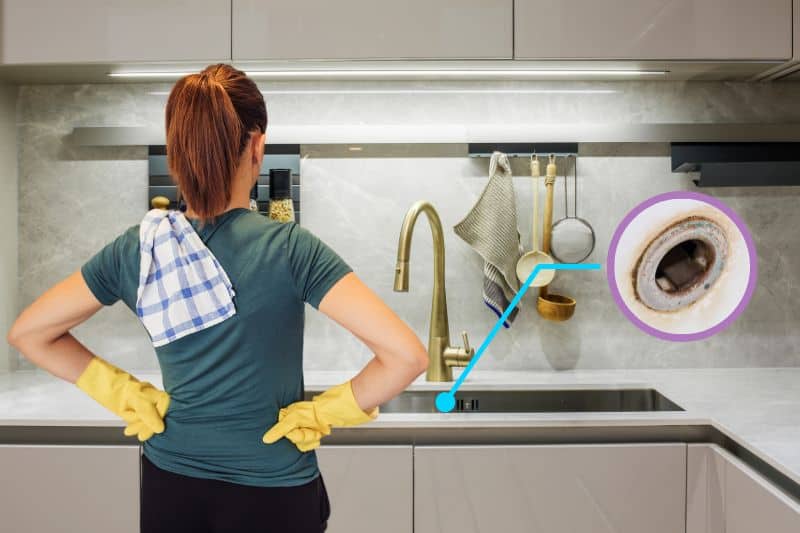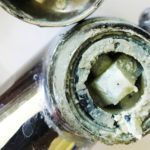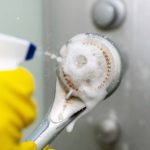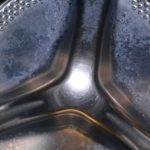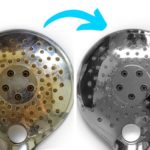Everyone loves it when their sink sparkles as if it were brand new. Unfortunately, limescale has other plans, and can be a real issue if you live in a hard water area.
Hard water contains minerals such as calcium and magnesium that leave behind a chalky residue when water evaporates off a surface.
This chalky residue is unsightly and can cause problems around the home, so it must be removed.
However, it can be tough to eliminate and gradually builds up if not promptly addressed. This leaves many homeowners feeling like limescale is an eternal problem.
Thankfully, we have all the cleaning know-how you need!
Read on to learn how to remove limescale from sinks and prevent further build-up using our six easy-to-follow methods.
Removing limescale from your sink will soon be as easy as any other cleaning task!
How to Remove Limescale from Sinks
Removing limescale from your sink can be challenging, especially if it’s been left to build up over time.
No matter how hard you scrub, the substance is unlikely to move unless you use the right cleaner. So, what cleaner should you be using on your sink?
We have found six viable and practical options for removing hardened limescale from your sinks:
1. White vinegar
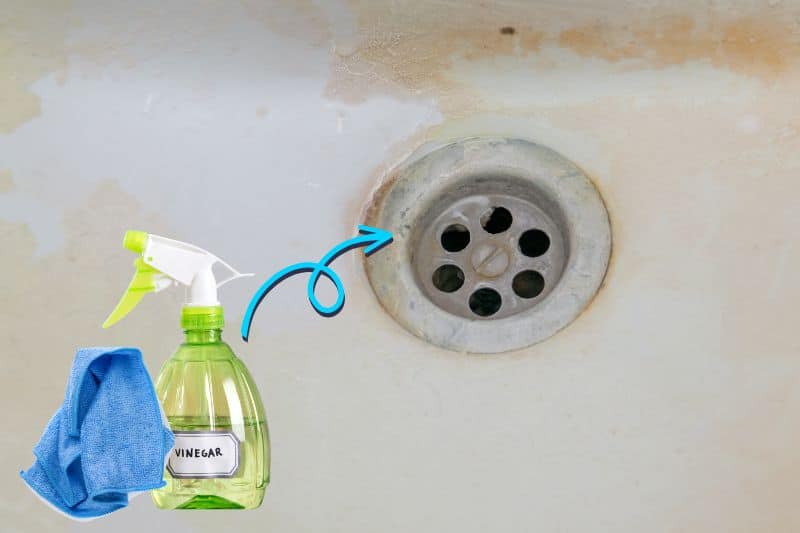
White vinegar is an amazing natural cleaner. It contains high levels of acetic acid, which can easily break down the minerals that make up the chalky limescale residue.
There are two ways of using vinegar to remove limescale, and the method you need to use will vary based on the level of build-up.
For thin layers, you need to:
- Mix one part water with one part white vinegar
- Either spray the cleaner onto the limescale or apply it using a clean cloth
- Use a cloth to scrub away the limescale and then rinse the sink with water
For thicker patches, it is better to:
- Mix one part water and one part white vinegar
- Either saturate a cloth with the cleaner and then place it over the affected area or fill a sandwich bag with the cleaner and secure it over the tap’s spout using a hair tie
- Leave the cleaner to work for up to 30 minutes before removing the cloth or sandwich bag
- Scrub at the limescale and then rinse away any remaining residue with water
A word of caution: white vinegar can damage metal because of its high acidity levels. Before using this method, check what materials your sink is made of and only apply it on appropriate surfaces.
2. Lemon juice

Lemon juice is another natural limescale remover that is highly effective due to its acidity, making it a great alternative to white vinegar.
Once again, this cleaner can be used in multiple ways depending on the level of build-up.
For minimal limescale, you need to:
- Spray or rub lemon juice onto the affected area of your sink
- Gently scrub at the limescale using a cloth or an old toothbrush
- Rinse off any remaining residue using water
For larger deposits, it is more effective if you:
- Either saturate a cloth in lemon juice and place it over the limescale or fill a sandwich bag with the juice and secure it over the spout using a hair tie
- Let the juice soak into the limescale for up to an hour before removing the cloth or sandwich bag
- Lightly scrub at any remaining limescale and then thoroughly rinse the sink
It can sometimes be easy to miss limescale build-up on spouts as they are not at eye level, meaning this is one of the most challenging parts to clean.
If the above methods didn’t work, you could try cutting a lemon in half and securing it over the spout before continuing from step two above.
3. Coca-Cola
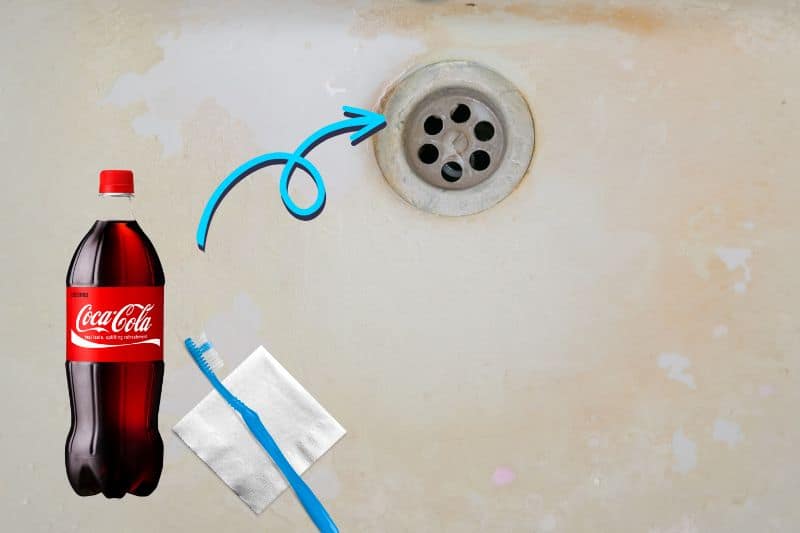
Coca-Cola may make a delicious drink, but did you know it also contains phosphoric acid? This makes it another alternative to white vinegar or lemon juice that you may already have in your home.
The only issue with this cleaning method is that it can leave behind a sticky residue. However, as long as you thoroughly rinse your sink off after cleaning it, you will have no issues.
To effectively use Coca-Cola, follow the below steps:
- Either soak a cloth in the Coca-Cola and cover the affected area or fill a sandwich bag with the drink and secure it to the tap with a hair tie
- Leave the cleaner to work for up to an hour, and then remove the cloth or sandwich bag
- Gently scrub away any remaining limescale using a clean cloth or an old toothbrush
- Rinse the sink with water, scrubbing to ensure all traces of sugar are removed
4. Bicarbonate of soda

Next up, we have bicarbonate of soda. This all-purpose cleaner will quickly and effectively remove the limescale from your sink. In the instructions below, we combine the bicarbonate of soda with water to make a paste.
However, the water can be substituted for white vinegar or lemon juice for an even tougher limescale remover.
To use, you will need to:
- Combine one part bicarbonate of soda with one part water to form a paste
- Use a cloth or an old toothbrush to lightly rub the cleaning paste over any areas of your sink that have limescale residue
- Let the paste sit for five minutes
- Rinse away all traces of the paste and limescale with water
5. Toothpaste
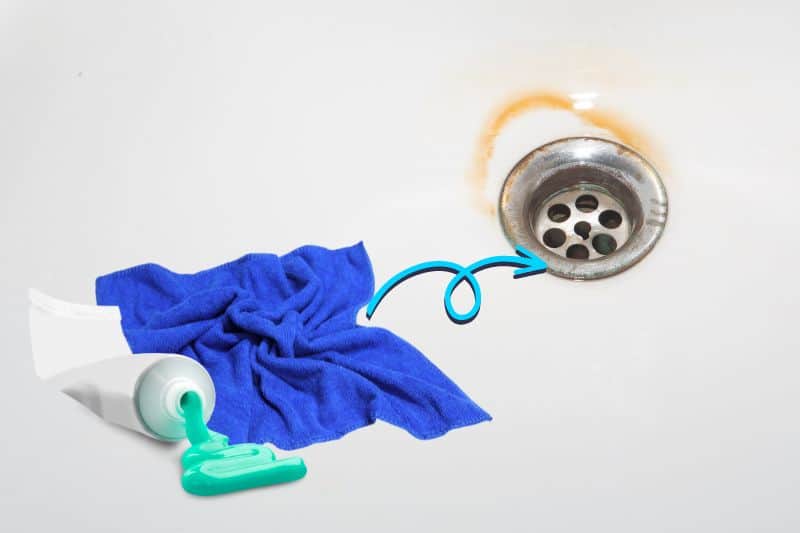
Toothpaste isn’t as good at removing built-up limescale from your tap’s spout as some of the other cleaners listed here, but it will be effective at removing limescale from the rest of your sink due to its mildly abrasive nature.
If possible, use toothpaste that contains bicarbonate of soda, as this will give you the best results.
To use, follow the below instructions:
- Squeeze a small amount of toothpaste onto a damp cloth
- Gently rub the toothpaste over the limescale
- Rinse the toothpaste and limescale away using water (you may need a cloth to help if the toothpaste is sticking to your sink)
6. Limescale remover products
If none of our natural limescale removers work for you, there is still the option of a store-bought limescale remover.
Many brands design specialist cleaners to tackle limescale, so there is undoubtedly one that’ll suit your needs.
Before using one of these commercial cleaners, always check that they are safe to use on your sink, as some limescale removers will damage certain materials.
You can follow the manufacturer’s instructions when using the cleaning product on your sink. In most cases, the following steps will give you the best results:
- Spray the limescale remover over any affected areas
- Let the cleaner sit for 10-30 minutes so that it can start to break down the limescale
- Lightly scrub at the limescale using a cloth before rinsing the area with water
What Problems Can Limescale Cause?
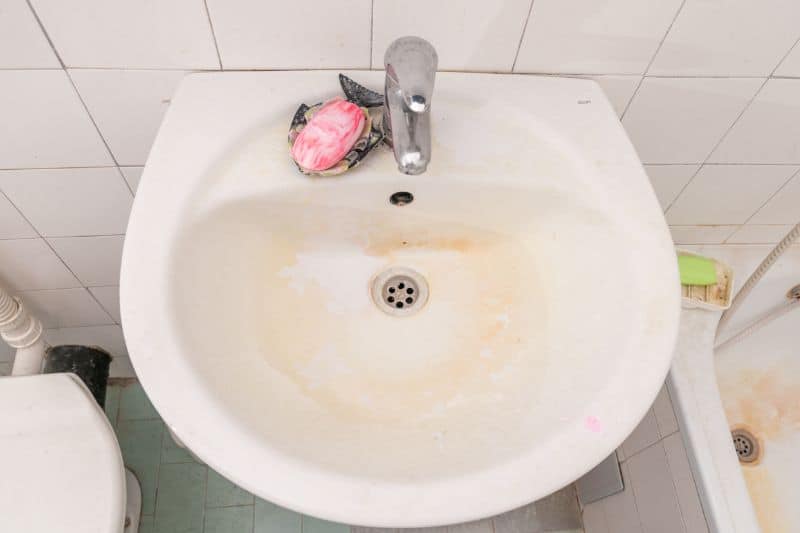
Large limescale deposits may be unsightly, but aesthetic appearance isn’t the only reason to remove this chalky substance.
If the limescale is left to build up in your pipes and taps, they will slowly become narrow and may eventually become blocked.
On top of this, limescale deposits also act to insulate your pipes. This means your heating system will have to work harder to heat your water, increasing energy bills.
Thankfully, these issues can be prevented by regularly cleaning out your pipes and preventing limescale depositing from forming in your pipes and sinks (see below).
How Do You Stop Limescale From Forming?
If you’re tired of cleaning or live in an area with hard water, we recommend taking a few measures to reduce the limescale in your home.
Some of these prevention techniques are easier to implement than others, so don’t worry if you can only do one or two things on this list.
Even the smallest change could make a big difference in the long run.
To stop limescale from forming, we suggest you:
- Use a water softener: A water softener is a device that removes the minerals from your water supply before it enters your pipes. This makes the water softer and significantly reduces limescale build-up.
- Use a water filter: These devices work the same way as water softeners but are installed near a tap rather than at the start of your plumbing system. This means you’ll get soft water from this tap, but the rest of your plumbing will still be susceptible to limescale.
- Regularly clean your pipes: Cleaning your pipes every week will remove any traces of limescale that do form. Pour a mixture of one part bicarbonate of soda with two parts white vinegar down the drain, let it sit for 20 minutes, and then flush it out with hot water.
- Wipe your surfaces: The most straightforward way to prevent limescale is by wiping down your surfaces after they come into contact with water, as limescale forms when sitting water evaporates and leaves a mineral residue behind.

Hannah has a passion for cleaning. She worked her way around Australia by cleaning hostels in exchange for free accommodation and used her cleaning skills to bag a job as a chalet host for a luxury ski company in France.
